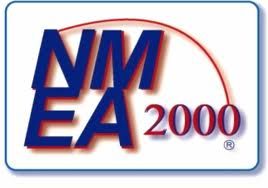 NMEA 2000® (¹) is a standard for electronic communication network specifically designed for pleasure boats, according to an industry standard published by the National Marine Electronics Association (NMEA). It aims to meet many needs, arising from the considerable increase of electronic devices onboard, the widespread use of computers and MFDs (²) with control and navigation application more sophisticated. It also aims to interconnect equipment provided by various manufacturers and brands, allowing boat builders and users great freedom in the choice of their navigation instruments.
NMEA 2000® (¹) is a standard for electronic communication network specifically designed for pleasure boats, according to an industry standard published by the National Marine Electronics Association (NMEA). It aims to meet many needs, arising from the considerable increase of electronic devices onboard, the widespread use of computers and MFDs (²) with control and navigation application more sophisticated. It also aims to interconnect equipment provided by various manufacturers and brands, allowing boat builders and users great freedom in the choice of their navigation instruments.
Protocol based Controller Area Network (or CAN bus) developed by Bosch and Intel, used for several decades in the automobile and automation industry, it allows communication of all devices meeting the “NMEA 2000® Certified” standard, whatever the manufacturer, by simple connection to the network. Designed to perform in harsh environments, NMEA 2000® uses the principle of a differential pair of wires in a standardized cabling, chosen for its insensitivity to parasites and allowing up to 200 meters in length in disturbed environments.
Principe
NMEA 2000® defines a new high-speed network communications protocol. It can accept up to 50 devices each having 254 addresses and data transfers up to 250 Kb/s. It is multi-talkers/multi-listenerrs. This protocol uses a compact binary message format (PGN), and employs priority-based message arbitration. Such a system is Plug & Play, peripherals are identified by the system as soon as they are connected (like the USB ports of a computer). Installation is therefore greatly simplified..
A NMEA 2000® network allows devices equipped with a display to receive information emitted by the various electronic sensors present on the network : GPS antenna, speedometer, depth sounder, temp sensor, anemometer, AIS receiver, aso. It allows to display digital data from engine sensor, hour counter, rev counter, and fuel and fresh water levels, on numerical indicators or devices with display placed anywhere on the boat.
NMEA 2000® is an important development compared to the standard NMEA0183, 50 times slower, limited to 1 talker/4 listeners broadcasting complex serial messages (ASCII protocol), through a wiring standard rarely respected by manufacturers.
Wiring
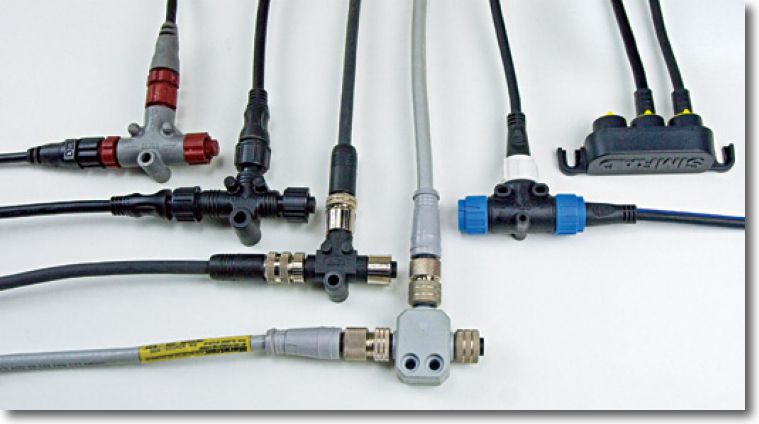
NMEA2000 cables and T-connectors (from left to right) Lowrance, Garmin, Airmar, Maretron, Raymarine and Simrad
NMEA 2000® approved a single cabling standard : DeviceNet. Only this type of cable can benefit from the “NMEA 2000® Approved” label.. DeviceNet is associated with technology CAN bus in the automotive industry for data transfer.
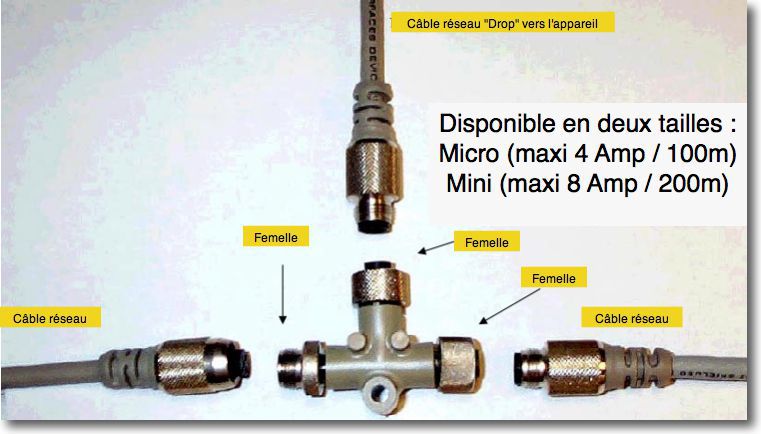 For the navy, NMEA 2000® has defined three cable sizes :
For the navy, NMEA 2000® has defined three cable sizes :
- Mini : the thickest, able to withstand a supply current of up to 8 Amperes and a length for the network (backbones) up to 200 meters high.
- Micro : the finest, can support up to 4 Amperes and a length for the network (backbone) up to 100 meters high.
- Drop (or Spur) cable : used only for connecting instruments, of a length less than 6 meters high.
The "Mini" cable is mainly used to build a backbone for networks on large ships (generally higher than 20 meters high), to which the instruments and sensors are connected with “Drop/Spur” cables. On smaller ships, the networks are entirely composed of “Micro” cables and connectors to which the instruments and sensors are connected.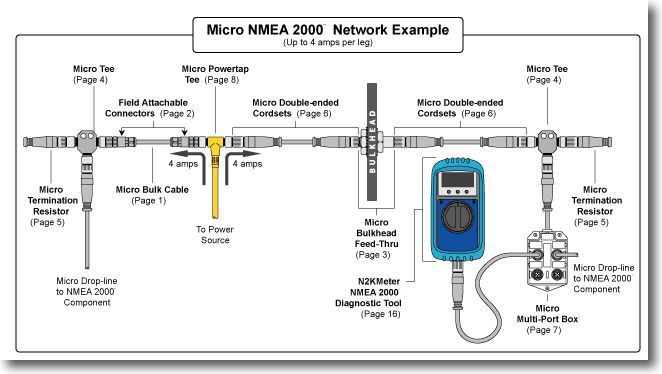 Garmin company provides clear explanations of the connections in this video :
Garmin company provides clear explanations of the connections in this video :
Message format and PGNs
In the NMEA 2000® protocol, messages are sent in packets. Each packet is composed of a header of 8 bits of data that indicates the transmitting device, the receiver (can be all receivers)), the priority level, and the PGN. March, the Parameter Group Number (³) is a number of 6 characters indicating what type of message it is, and therefore how the data should be interpreted to determine the values of the data fields it contains. NMEA sells the standard that describes how to decode each message providing its PGN, this information is not public.
Proprietary networks
Many manufacturers have created their own communication formats : Simrad (SimNet), RayMarine (SeaTalk NG), Furuno (NavNet), Garmin (GMN), Stowe (Dataline 2000), Brunswick (SmartCraft), aso. Some of them have designed adapters allowing their devices to communicate with the NMEA 2000® network, but not all. It is therefore important to consult the list of NMEA 2000® certified products (⁴) if you want to integrate a device into this network.
Still not widespread at the beginning of the years 2010 on pleasure craft below 20 meters high, there is no doubt that the NMEA 2000® Standard will increasingly interest boatyards, French as foreign, who will install cabling at the construction stage to offer their customers the freedom of choice of navigation devices. An additional commercial argument in an ever more competitive market. A hard blow for manufacturers who favor proprietary networks locking their customers into a single brand. A benefit for users who will be able to change, replace the way they like, their instruments over time.
—
(¹) NMEA 2000® is a registered trademark of the National Marine Electronics Association.
(²) Multi-Functional Display, multifunction display.
(³) Parameter Group Numbers
(⁴) NMEA 2000® Certified Products
—
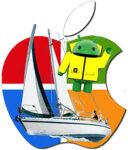

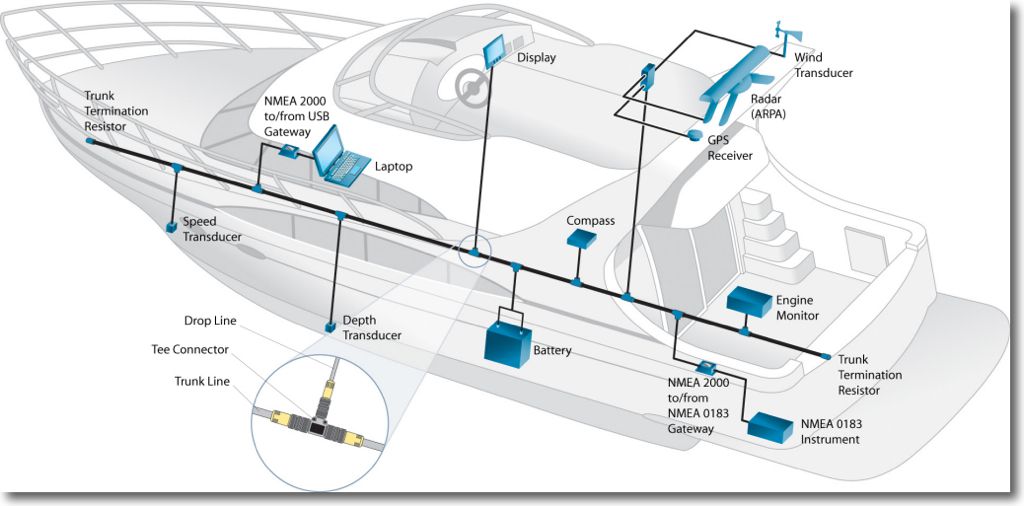
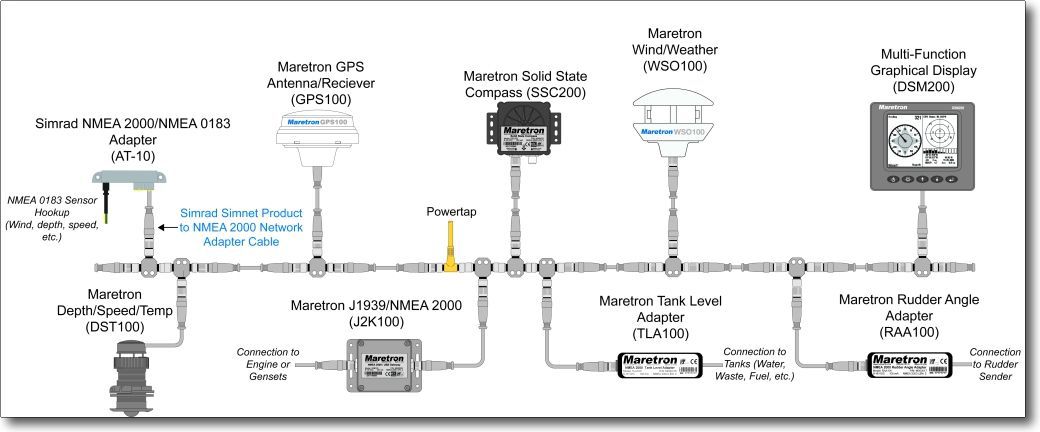

Thank you for this information.
For my part I know nothing about it and am just starting to become interested in marine electronics, but a speed of 250kb/s seems really low to me.
What kinds of data pass through this system? I'm thinking audio or video (webcam, exterior/interior intercom, security camera etc) which would be incapable of passing through these pipes.
Merci,
Clément
This only concerns the on-board instrumentation : navigation, motor and electrical controls, fluid levels. Neither the video, not even Radar, nor remote monitoring.